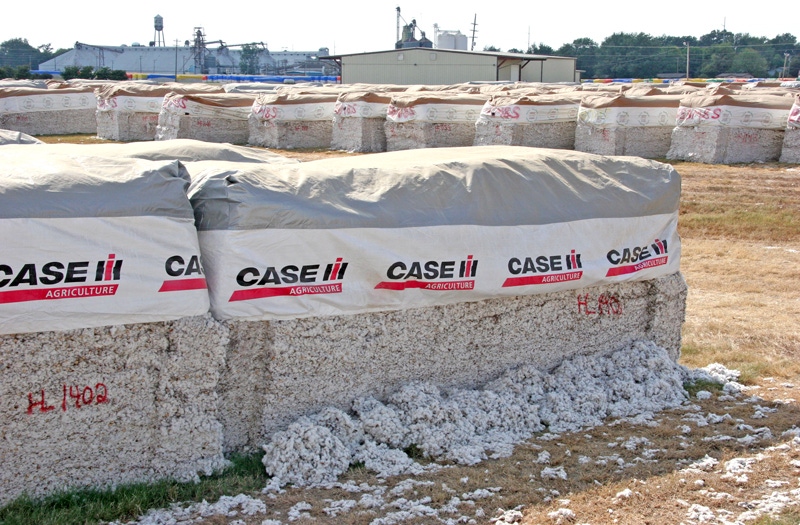
Record high cotton prices have dampened world demand for cotton products, slowing U.S. exports, and pointing to somewhat lower prices for this year’s crop, says O. A. Cleveland, Jr., Mississippi State University economics professor emeritus. “I would suggest that the crop that’s in the field now will be 10 cents to 15 cents less valuable than last year’s crop. But, I think you’ll still have ample opportunity to price cotton at $1 or more."

Record high cotton prices have dampened world demand for cotton products, slowing U.S. exports, and pointing to somewhat lower prices for this year’s crop, says O. A. Cleveland, Jr.
“I would suggest that the crop that’s in the field now will be 10 cents to 15 cents less valuable than last year’s crop,” he said at the joint annual meeting of the Mississippi Boll Weevil Management Corporation and the Mississippi Farm Bureau Cotton Policy Committee at Grenada, Miss.
Even with Texas’ dismal crop outlook as a result of a severe ongoing drought, there will be an increase in world production and carryover this year, “and that will probably keep price from going back above $1.25,” says Cleveland, Mississippi State University agricultural economics professor emeritus.
 “But, I think you’ll still have ample opportunity to price cotton at $1 or more.
“But, I think you’ll still have ample opportunity to price cotton at $1 or more.
“The bottom line is that cotton still has to compete for land. With cotton carryover remaining relatively tight, and grain carryover still relatively tight, that balance is going to keep prices somewhat in the range of $1.10 to $1.25 for December 2011 cotton.
“I think you’ve got at least a couple more years to see a dollar sign in front of your price,” Cleveland says. “I’ve been bullish from $1.45 cents all the way down to $1.13 where we are today (July 7), and I remain somewhat bullish. I think the reality of the matter is that cotton, at $1.13, is not overly expensive — but then, neither is it particularly cheap.”
Demand for cotton has slacked off somewhat, he notes. “This is due to somewhat less demand from consumers in response to higher prices for cotton products, and a bit of slowing of purchases by textile mills because they had yarn sitting unspun in inventory and they had to move that out before they would step in and buy again.
“Even though they’re now that coming into the market again, consumer demand is not as strong as it was, so the mills are basically operating hand-to-mouth and trying to sort through the Chinese situation.”
More and more, Cleveland says, the cotton market is being influenced by China, India, Brazil, and countries in the Asian sub-continent.
“Whether that influence is production oriented or demand oriented, Chinese and Indian consumers are now the big horse pulling the demand/price wagon, as opposed to the many decades when U.S. consumers pulled that wagon.
“China, India, and Brazil — these are places where the future of demand truly lies. We used to laugh and say if we could just get Chinese consumers to buy one more tee shirt that it would do wonders for cotton demand. Well, now they’re buying one more tee shirt, and sometimes two, and that’s what’s given us $1.50 and $2 cotton.
Large abandonment in Texas
USDA’s July 12 supply and demand report will be the first attempt at an objective look at the extent of abandonment in Texas, Cleveland says.
“I’m thinking there will probably be 2 million to 2.5 million acres abandoned and that Texas yield will be less than 1 bale per acre.”
As an example of the gravity of the drought there, Cleveland cites Dawson County, Texas.
“They’re about two counties south of Lubbock, the center of the largest cotton-producing region in the world. Dawson production is basically dryland, and they’ve had some tremendous yields in the past.
“In 1973, they had what at the time was a record crop, 338,000 bales. In 1974, they had a drought very similar to the one now in progress and they harvested only 32,000 bales. They lost right at 90 percent of their crop — and that’s the kind of situation they’ve looking at this year.”
If U.S production falls to 16 million bales, exports could drop to 12 million bales, Cleveland says, “or I could see us going below 11 million. If we produce only 16 million bales, and we export more than 11.5 or 12 million, we’re going to be down to a carryover of about 1.5 to 2 million.”
However, he says, world production is expected to be up 10 million bales, and consumption up 4 million bales, leaving a gap of 6 million bales.
“I know the Australian crop has come on strong lately, and India’s crop is getting good rains. The Texas crop still has a long way to go — but I don’t think their crop will get bigger even if they get rains; I think it can only get smaller.
So, stocks are still going to be somewhat low, and we’ve still got to pay a lot attention to the Chinese economy. They’ve raised their interest rates 10 or 11 times in the last 15 months. Their economy is still growing at 6 percent to 8 percent annually. Inflation is a problem, and they’re trying to slow it.”
The value of the U.S. dollar, which Cleveland says, “most analysts suggest is still in trouble, will certainly have an impact on cotton prices. As the value of the dollar goes higher, the price of cotton will go lower. If the reverse happens and the dollar goes down, cotton prices will get good support.”
About the Author(s)
You May Also Like



